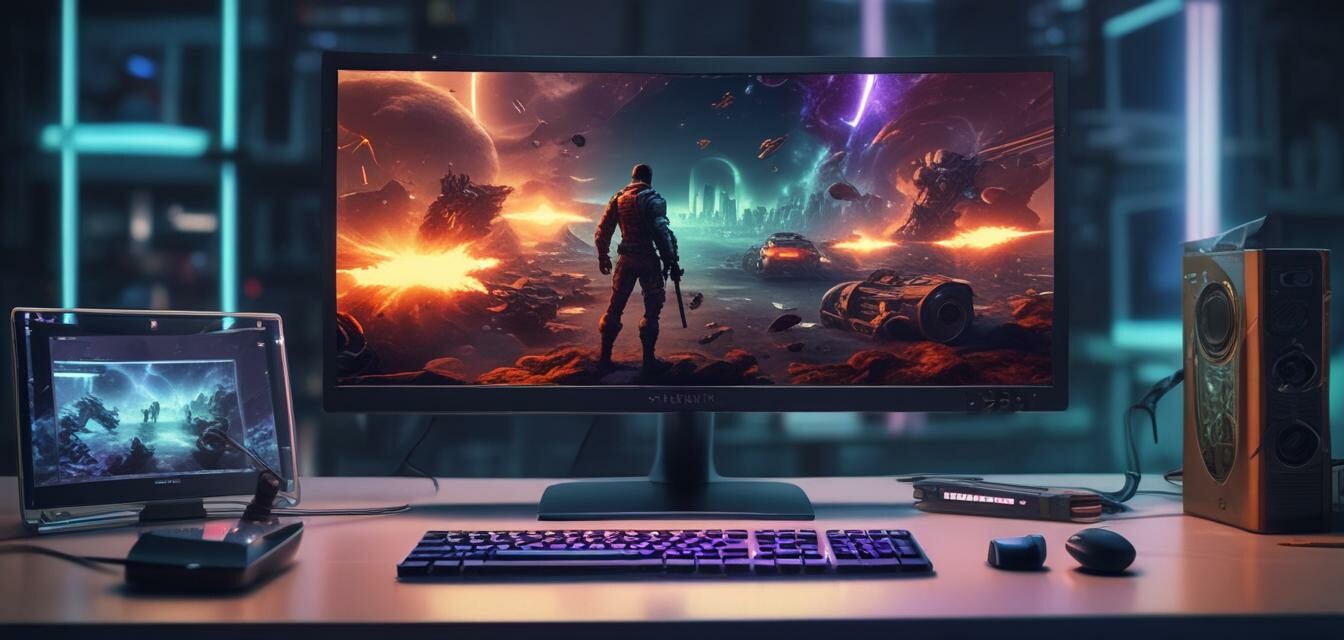
How to Choose the Right Gaming Monitor for FPS Games
Key Takeaways
- Choose a monitor with a high refresh rate (144Hz or higher) for smooth gameplay.
- Look for a low response time (1ms to 5ms) to minimize motion blur.
- Consider the resolution and screen size based on your gaming preferences.
- Utilize features like G-Sync or FreeSync to reduce screen tearing.
- Be mindful of the panel type (TN, IPS, VA) based on your gaming and viewing needs.
For every gamer, the right monitor is crucial, especially in high-stakes first-person shooter (FPS) games where every millisecond counts. Choosing the right gaming monitor can elevate your overall gaming experience. This guide will help you understand the key aspects you should consider to make an informed decision.
What to look for in a gaming monitor for FPS games
When searching for a gaming monitor tailored for FPS games, it’s essential to focus on several critical factors. Below are the essential elements:
- Refresh Rate: A higher refresh rate results in smoother animations and improved responsiveness, crucial for FPS games.
- Response Time: A low response time helps eliminate blurring during fast movements.
- Screen Size and Resolution: The right size can offer a more immersive experience.
- Panel Type: Different panel types offer various advantages in color reproduction and viewing angles.
- Adaptive Sync Technology: Enables smooth gameplay without tearing or stuttering.
Refresh Rates Explained
The refresh rate indicates how many times per second the monitor refreshes the image. A higher refresh rate provides a more fluid visual experience. Here’s a simple table that illustrates different refresh rates:
| Refresh Rate | Description |
|---|---|
| 60Hz | Standard refresh rate. Good for casual gaming. |
| 144Hz | Highly recommended for competitive FPS gaming. |
| 240Hz | The best choice for professional gamers seeking the ultimate performance. |
Response Times and Their Impact
Response time measures how quickly a pixel can change from one color to another, expressed in milliseconds (ms). Lower response times result in less motion blur during high-speed gameplay. Below is a comparison of response times:
| Response Time | Effect on Gaming |
|---|---|
| 1ms | Ideal for fast-paced FPS games. Minimal motion blur. |
| 3ms - 5ms | Acceptable for most gaming scenarios but may show slight blurring. |
| 6ms+ | Not recommended. Motion blur may distract players. |
Screen Size and Resolution Considerations
The size and resolution of your monitor greatly affect your gaming experience. Here are a few points to ponder:
- Screen Size: Larger screens enhance immersion, but ensure that your desk space can accommodate them.
- Resolution: Ideally, aim for 1080p (Full HD) or higher to appreciate detailed graphics.
- Aspect Ratio: A 16:9 ratio is standard, but ultrawide monitors (21:9) provide an expansive field of view.
Panel Types Explained
Understanding the benefits and drawbacks of different monitor panels can impact your choice:
| Panel Type | Pros | Cons |
|---|---|---|
| TN (Twisted Nematic) | Fast response times and high refresh rates. | Poor color accuracy and viewing angles. |
| IPS (In-Plane Switching) | Excellent color reproduction and viewing angles. | Generally slower response times than TN panels. |
| VA (Vertical Alignment) | Good contrast ratios and decent color. | Slower response times compared to TN and IPS. |
Adaptive Sync Technology
Adaptive sync technology helps to mitigate screen tearing and ensure that frames are displayed smoothly. Here's a breakdown of popular technologies:
- NVIDIA G-Sync: Designed for NVIDIA graphics cards. Provides smooth gameplay by syncing the monitor's refresh rate with the GPU.
- AMD FreeSync: Works similarly to G-Sync but is compatible with AMD graphics cards. Typically, it's more cost-effective.
Final Thoughts
Selecting the right gaming monitor can significantly enhance your FPS gaming experience. Consider the factors outlined in this guide to find a monitor that suits your specific needs and gaming style. Remember to balance features like refresh rates and response times with your budget effectively.
Tips for Beginners
- Start with defining your budget to narrow down your options.
- Read reviews and watch videos to see the monitor's performance in action.
- Visit a local store to get a feel for the monitors before purchasing.
- Make use of comparison tables available online to aid your decision-making.
Pros
- Enhances gaming performance with better visuals.
- Reduces eye strain with proper monitor selection.
- Improves overall immersion during gameplay.
Cons
- High-quality monitors can be expensive.
- Competitive choices can be overwhelming.
- Requires additional components like G-Sync or FreeSync setups for full benefits.
For additional insights and tips related to gaming equipment, check out our Buying Guides section. You can also explore related topics such as Gaming Monitors and Gaming Accessories.
